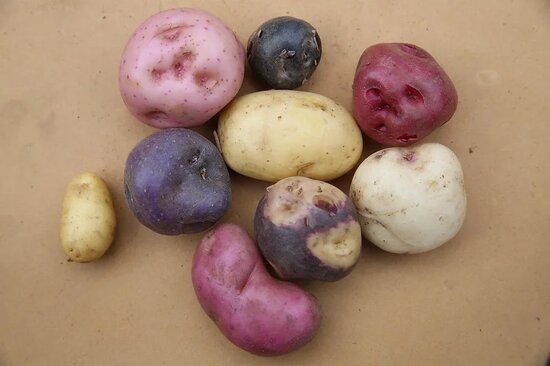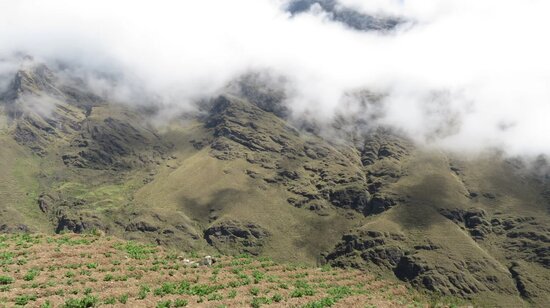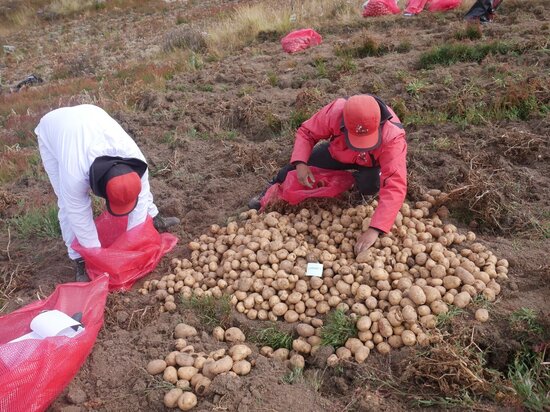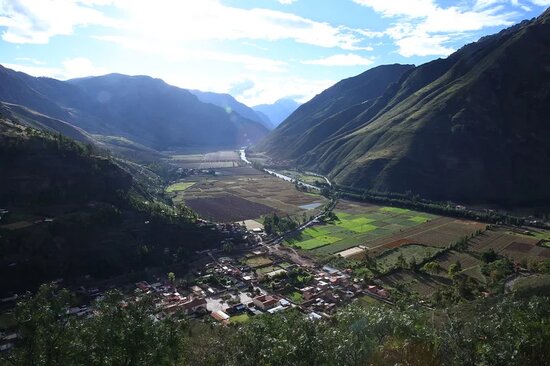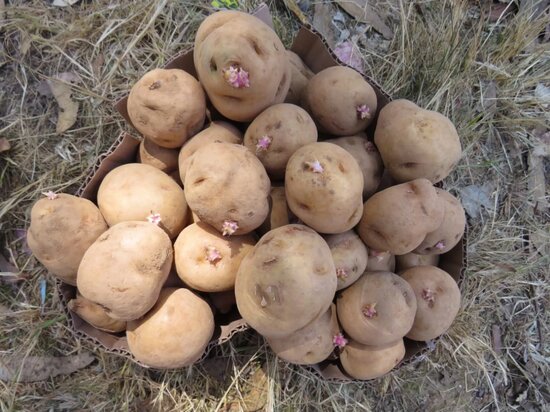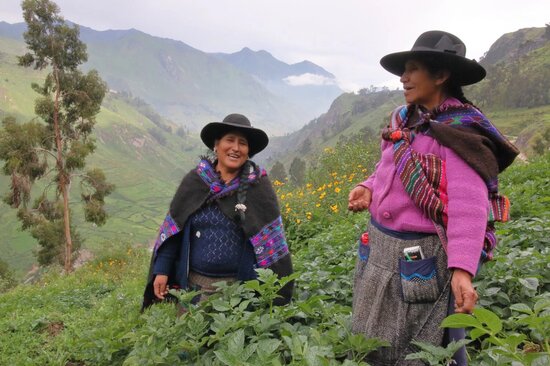CAMPAIGNS
CIP-Matilde Potato Variety
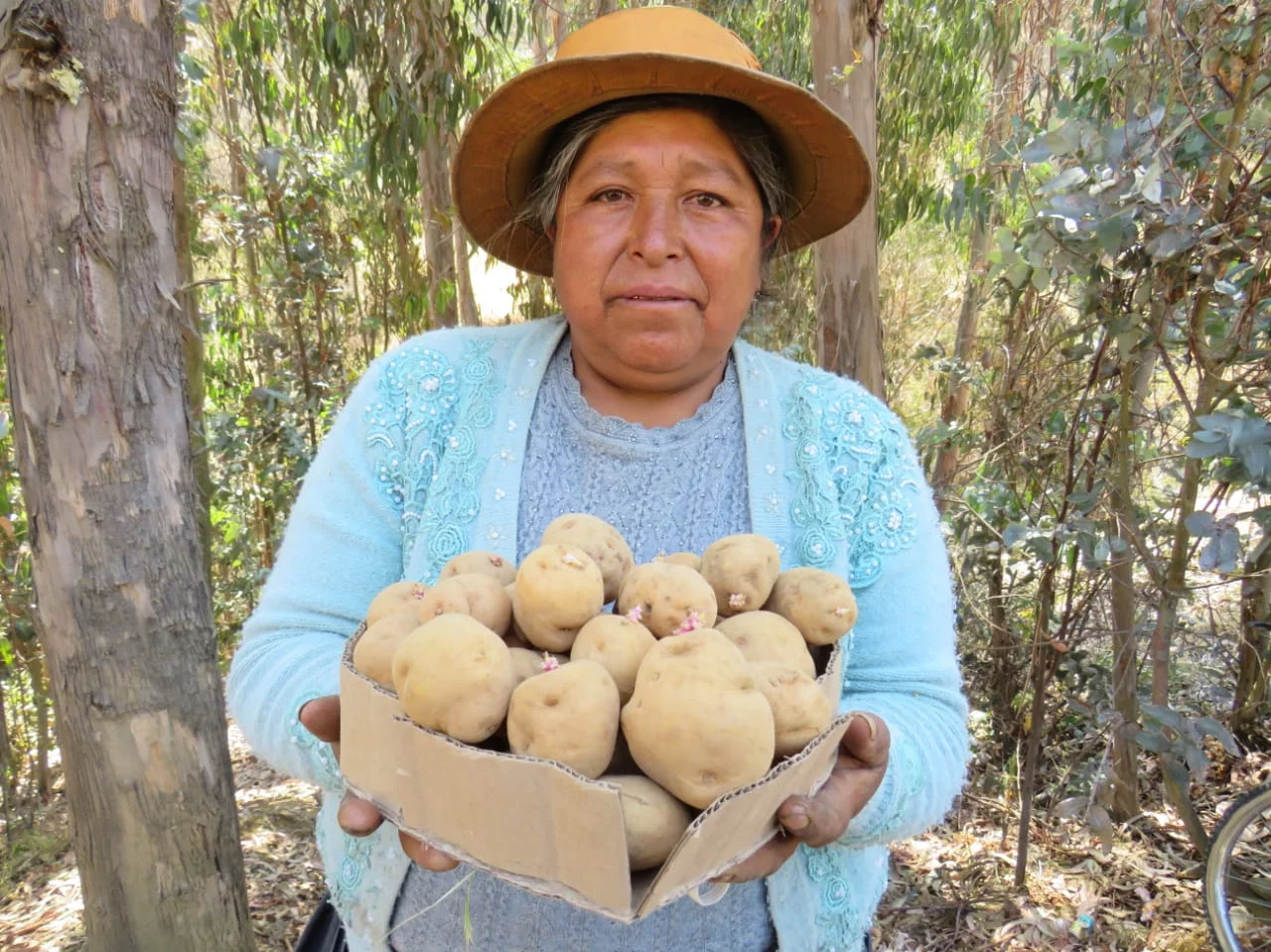
Farmer Mariluz Cardenas holds CIP-Matilde tubers.(Photo: CIP/J Huanai)
Introducing CIP-Matilde, a New Disease-resistant Potato
On World Food Day 2021, the Crop Trust and the International Potato Center (CIP) announced a new potato variety for farmers everywhere.
World, meet CIP-Matilde, a potato variety that can almost completely withstand late blight, a disease that commonly destroys potatoes.
Developed by CIP with support from the Crop Trust’s Crop Wild Relatives Project, CIP-Matilde is an example of the potential of using crop wild relatives for breeding climate-smart varieties, an approach that could boost food production and support farmers' livelihoods across the globe.
CIP-Matilde is named after potato breeder Matilde Orrillo, who worked for CIP for 37 years and pioneered the center’s use of wild relatives in potato breeding.
Photo Gallery
Video Gallery
Messaging
- The potato is the third most important food crop globally. It is grown on every continent except Antarctica!
- Farmers domesticated the first potatoes in South America between 8,000 and 10,000 years ago. The Central Andes region is home to the world’s greatest potato biodiversity, with more than 3,800 cultivars, or “native potatoes” that come in a range of sizes, shapes and colors.
- The area is also home to more than 150 potato wild relatives, wild weedy cousins of cultivated potatoes we eat today, most of which produce tubers that are too small and bitter to eat. However, these wild relatives have excellent tolerance to extremes, such as heat, drought and freezing temperatures. They also have genes that help them resist pests and diseases, threats that are becoming worse under climate change.
- The good news is that CIP and Crop Trust scientists used cross-breeding with wild relatives to develop a potato variety that is highly resistant to late blight disease. This new variety is being released in Peru as CIP-Matilde.
- CIP-Matilde is named after potato breeder Matilde Orrillo, who worked for CIP for 37 years and pioneered the Center’s use of wild species in potato breeding.
- CIP-Matilde’s late-blight resistance comes from two wild species: one from central Peru that has only recently been used by potato breeders (Solanum cajamarquense) and one from Mexico that breeders have used for years (Solanum demisum).
- The breeding process resulted in thousands of progeny, which scientists evaluated to select the most disease-resistant and commercially viable ones through a process of elimination and farmer evaluation.
- CIP-Matilde could liberate Peruvian potato farmers from the cost and risks of applying fungicides. It is also an example of the potential of using crop wild relatives for breeding climate-smart varieties. This approach could boost food production and farmer resilience across the globe.

